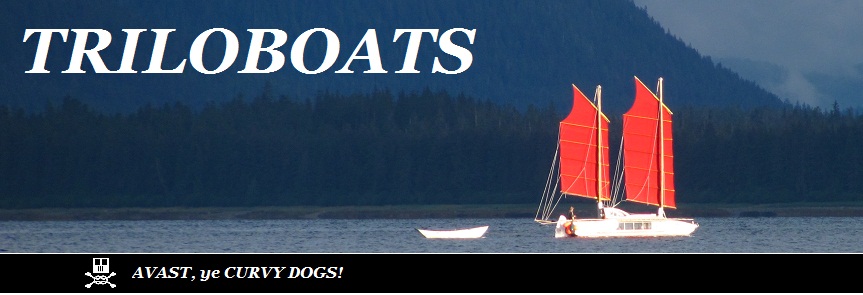-- Elizabeth Alexander
Keeping a Glean Mind
To glean is to harvest what reapers do not. Traditionally, it has to do with planted fields, but I'm going to generalize, here, to include the gathering of any wild, neglected or discarded bounty.
Gleaning is next to free; even its tools may be gleaned or improvised. Every bit gleaned is something you don't have to pay for. Once you develop a glean mind, you'll start to see that we're surrounded by food, clothing, tools, containers... literally drowning in surplus. Our culture's affluenza, so long as it lasts, saturates our world with cast-offs and goods from the outboard side of diminishing returns.
At the very least, gleaning is a fun hobby/pastime. At best, it's preparation and proficiency for hard times. The mind is the first and most important tool. Sharpen it up while the going is good!
Wild Bounty includes wild fruits and berries, fish and game.
Often overlooked are wild greens. These include many species from familiar vegetable families. Others, not so familiar, are nevertheless delicious and nutritious. Many 'weeds' have a mild taste, but you'll often encounter stronger tastes than those to which we're accustomed. Widening your tolerances and acquiring the taste for these is not only rewarding in terms of variety, nutrition and abundance, but is a useful exercise in its own right.
Wild harvest takes application and diligence. Not everything that looks edible is good for you. Not everything which is good for you looks edible. Some must be prepared correctly to neutralize toxins. Some have irremediably toxic look-alikes. Gleaning from the wild is safe if you take the time to educate yourself. Libraries, cooperative extension agencies, books and many organizations provide the know-how, and practice makes perfect.
Don't over-harvest; leave plenty to replenish itself. In the case of game, it's just plumb easier to follow the regulations. Most are reasonable, in terms of stock management. If you're caught poaching, the price of meat goes way up.
Domesticate Bounty (I'll call it that) is that from anything that has been planted, whether or not it's still tended.
Abandoned and 'volunteer' fruit and nut trees, gardens, fields and areas surrounding them are good sources of foods. Once located, you can return again and again. With a little extra effort, you can do some tending, yourself. Pruning a tree, correctly done, increases its output, and improves its health.
Farms harvest their crops on a large scale, with a rather large degree of inefficiency. The gleaner, following harvest, can recover a huge amount of missed produce. This is the standard meaning of gleaning, and there are many charitable organizations who help collect and distribute to the needy. Any surplus of your own can be channeled through one or more of these.
Permission to glean is certainly required from farmers, and very often from 'abandoned' properties. If you are gleaning for yourself, as well as for charity, be sure to make that clear.
Also, in either case, be sure to evaluate the situation for pesticides, herbicides, factory or sewage run-off and other toxic pollutants. Look upstream and up the prevailing wind.
Dumpster and Dumpsite Diving
The dumpsters of America are a veritable corucopia. The things people throw away!
Food is not least among them. Almost all packaged perishables have an expiration date stamped on them, and laws prevent them from being sold. This is one-size-fits-all legislation, designed to protect the consumer from plunking down good money for spoiled goods, and the vendor from consumers wanting money back for last-years pudding-gone-bad. But it means that a LOT... I mean a LOT of perfectly good food is thrown out every single day. And friends, your nose (face, forward, center) is a highly evolved detector of food gone south. If it looks or smells suspicious, then throw it out. What is your refrigerator, after all, but an expensive, upright dumpster? Same rules apply.
Harbor dumpsters are particularly lucrative. Many's the expensive electronic device ends up sitting inside or next to one for lack of a fuse. Fishing gear, jerrycans, paint, ripped out boards with bronze gear attached! Go ahead... turn up your nose. I'm right behind you!
Rather than go into this too deeply, I'll refer you to The Art and Science of Dumpster Diving by John Hoffman. Be aware that there are tools and safety techniques to acquire. Our aversion to garbage is not entirely unjustified. Nothing too strenuous - rubber gloves, boots, pvc raingear, soap and water - stuff you've likely got on hand already.
Be aware that this activity is often frowned upon, despite that you're actually saving the proprietors disposal fees. Many are concerned about liability issues. If confronted, be polite. Quite often, if your case is well thought out in advance, you can persuade the owner to let you continue. Observe good etiquette and don't trash the place, or that'll be the end of it. Discretion never hurts.
*****
So next time you're walking along, take a look around. Are those dandelions? They used to hold festivals when they arrived in spring, ending winter malnourishment. Is that 'ornamental' at the bank covered in plums? Is that aggressive mass of bramble blackberry?
And a word of caution... gleaning can lead to its own strain of affluenza. Take what you need and don't bog down in plenty!


No comments:
Post a Comment